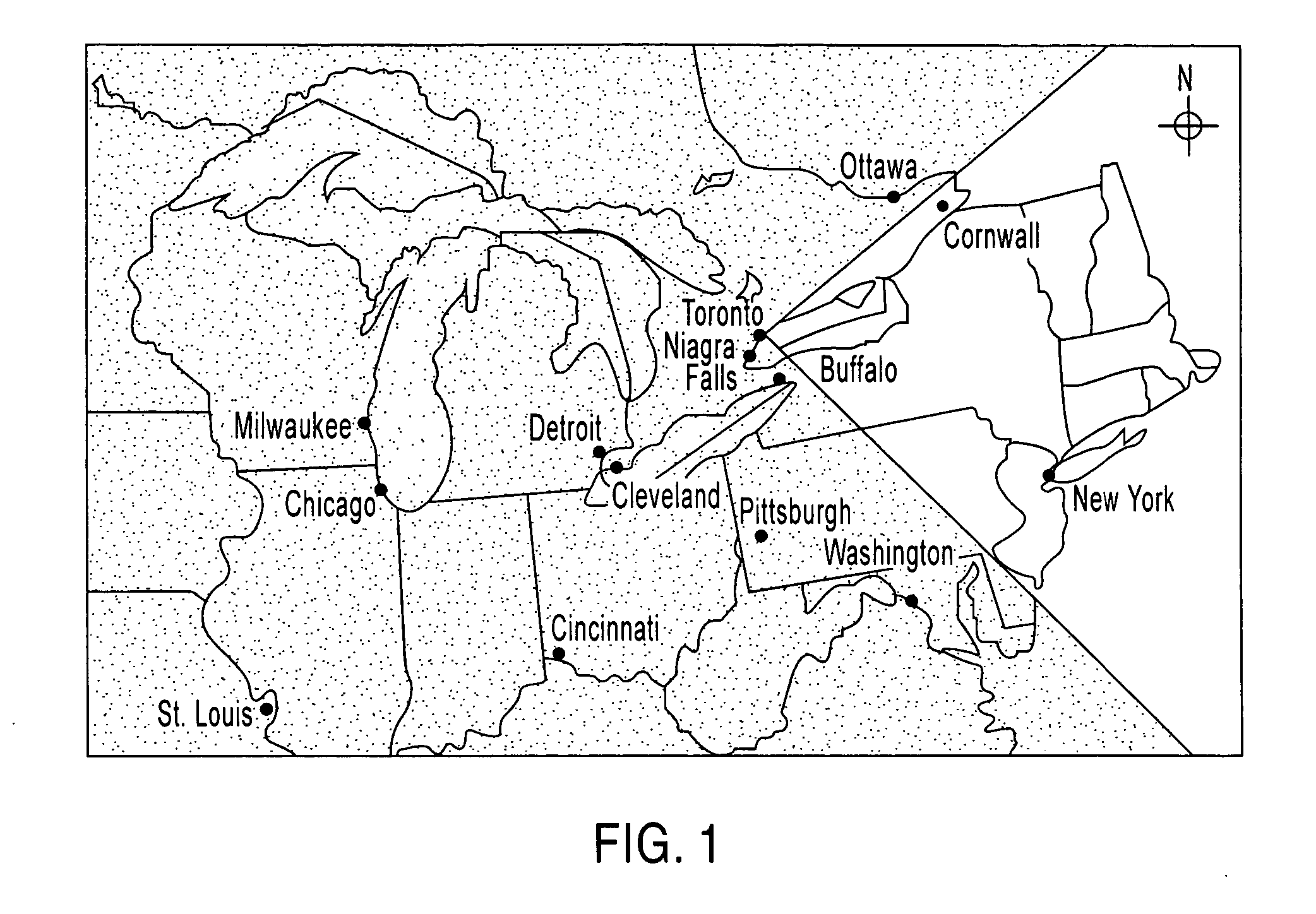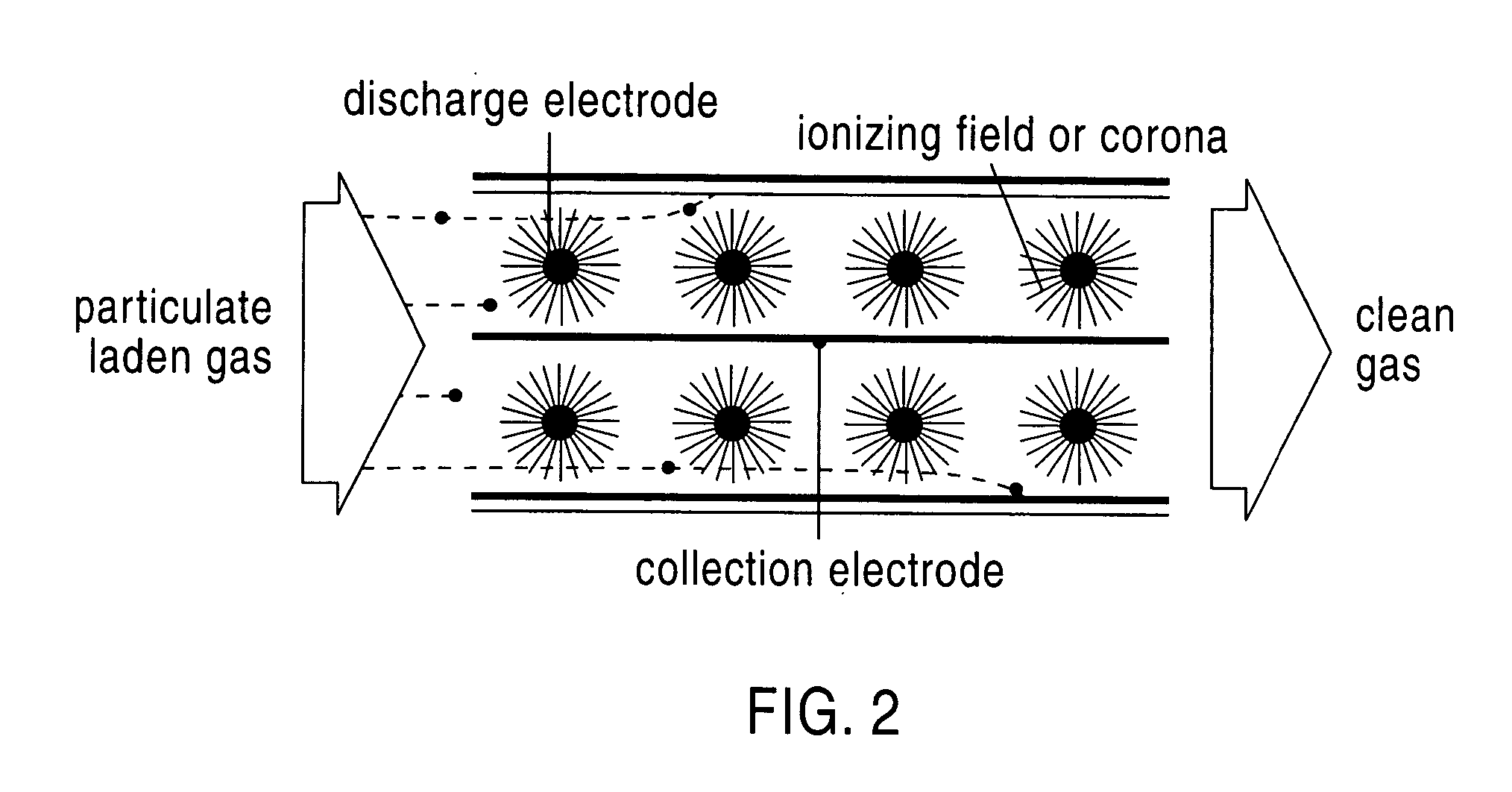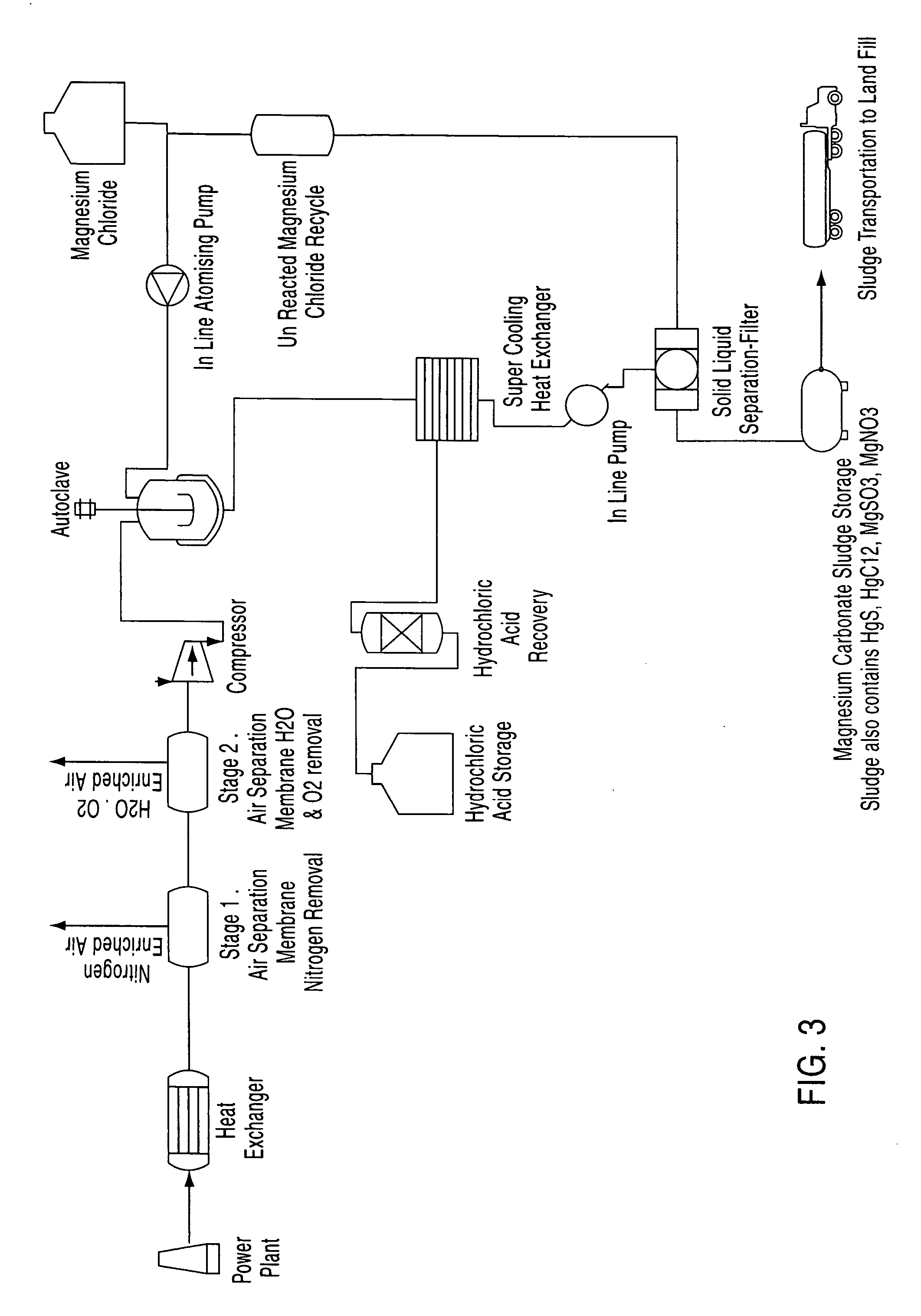Process for removal of pollutants
a technology for removing pollutants and pollutants, applied in the direction of cadmium sulfide, zinc sulfide, calcium/strontium/barium carbonate, etc., can solve the problems of rising sea waters, unwanted production of many pollutants, and harmful carbon dioxide emissions
- Summary
- Abstract
- Description
- Claims
- Application Information
AI Technical Summary
Benefits of technology
Problems solved by technology
Method used
Image
Examples
Embodiment Construction
[0024] The present invention relates to a process for the removal of pollutants from an emission from a combustion process and, more particularly, to a process for removing pollutants such as carbon dioxide, mercury, sulphur dioxide, nitrogen compounds and oxygen compounds from an emission from a combustion process.
[0025] The process of the present invention may be used in any industrial application to remove pollutants from gas, including, e.g., power utilities, refining plants and incineration plants. The process of the invention is particularly suited for adoption by advanced power plants such as zero-emissions Vision 21 system configurations developed by the United States Department of Energy's fossil energy program.
[0026] The objects of the present invention are achieved through a process of sequestering pollutants to form a stable, benign solid material that is readily disposable without harmful effects to the environment. For example, the present invention provides a proces...
PUM
| Property | Measurement | Unit |
|---|---|---|
| Temperature | aaaaa | aaaaa |
| Temperature | aaaaa | aaaaa |
| Temperature | aaaaa | aaaaa |
Abstract
Description
Claims
Application Information
 Login to View More
Login to View More - R&D
- Intellectual Property
- Life Sciences
- Materials
- Tech Scout
- Unparalleled Data Quality
- Higher Quality Content
- 60% Fewer Hallucinations
Browse by: Latest US Patents, China's latest patents, Technical Efficacy Thesaurus, Application Domain, Technology Topic, Popular Technical Reports.
© 2025 PatSnap. All rights reserved.Legal|Privacy policy|Modern Slavery Act Transparency Statement|Sitemap|About US| Contact US: help@patsnap.com



